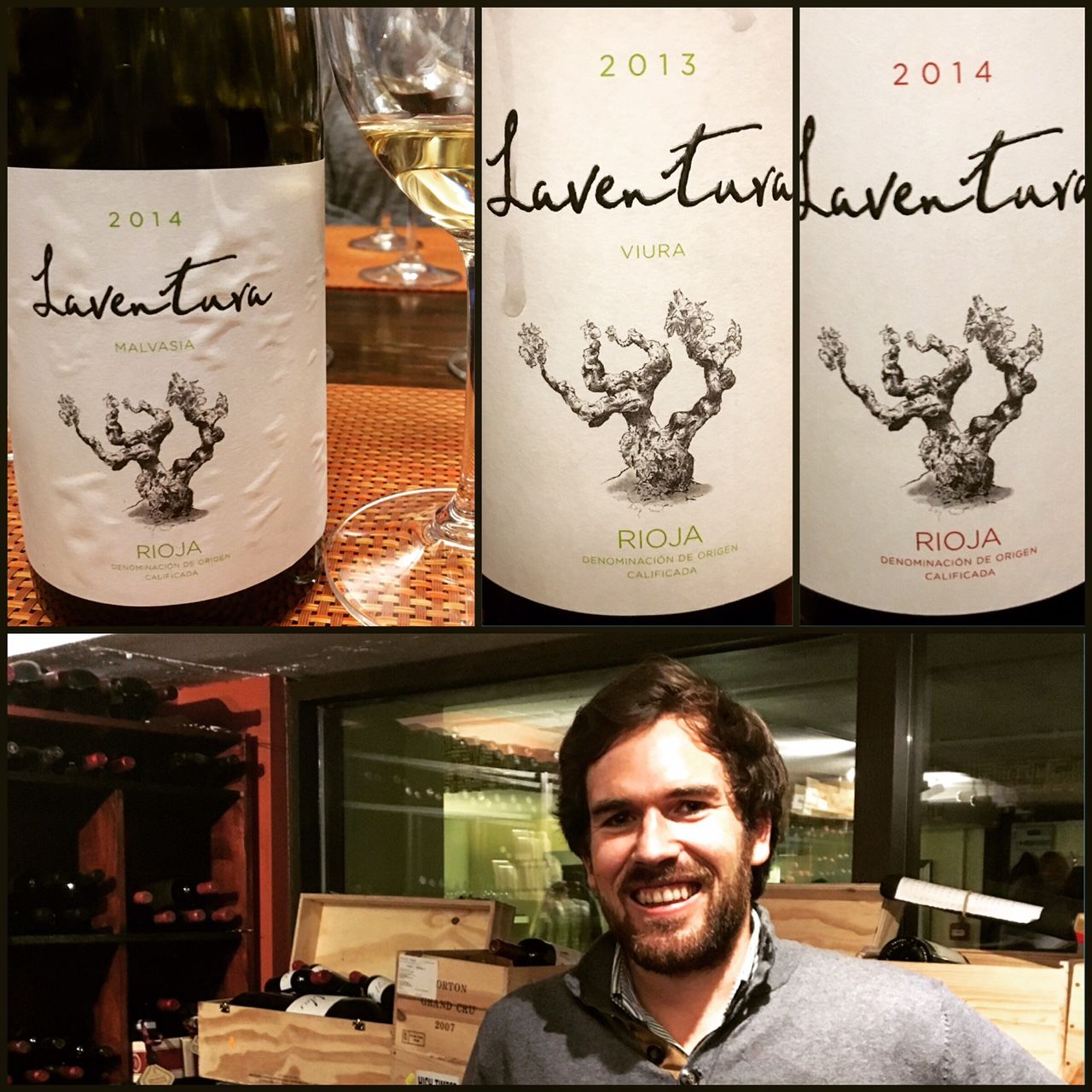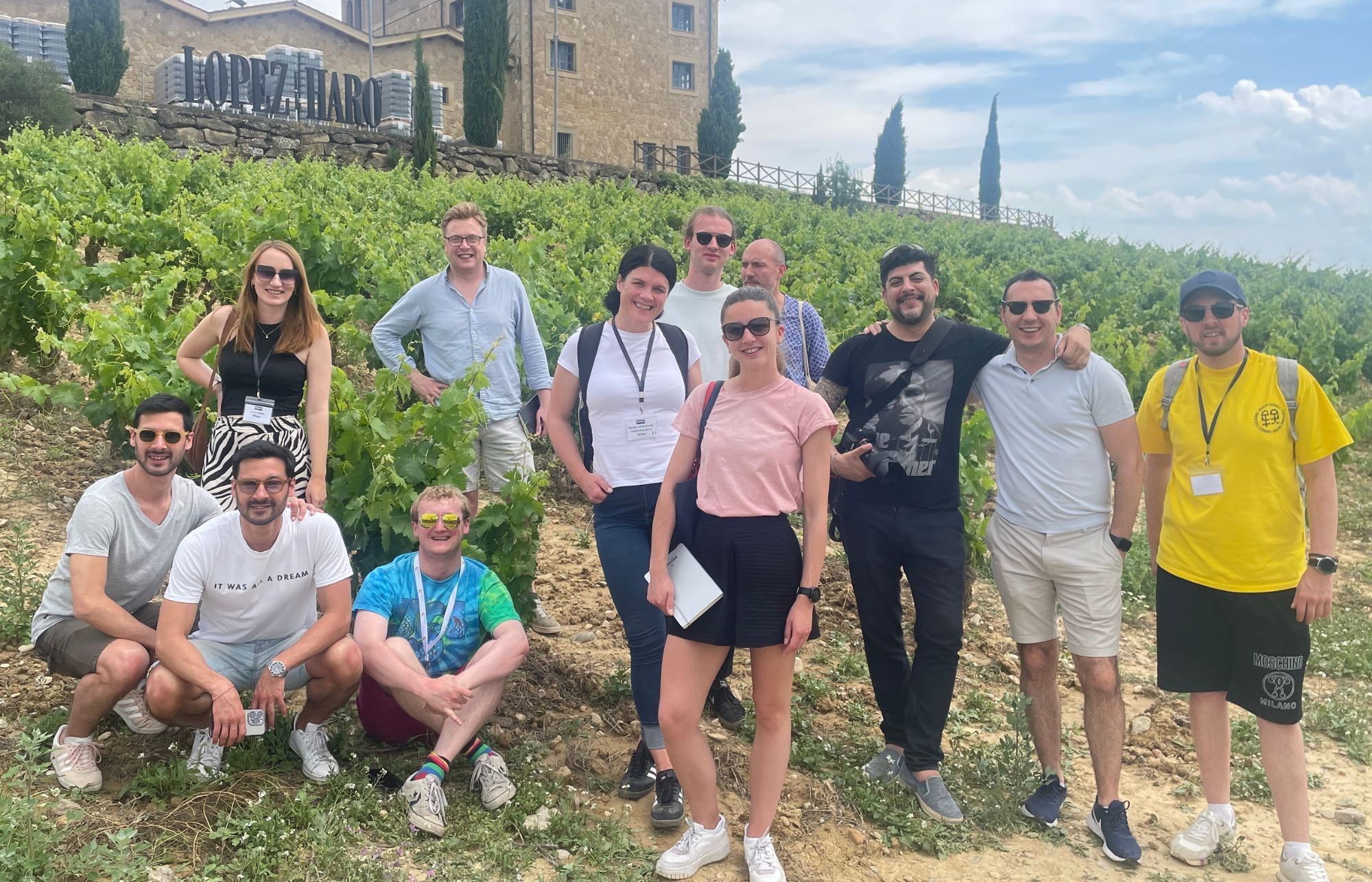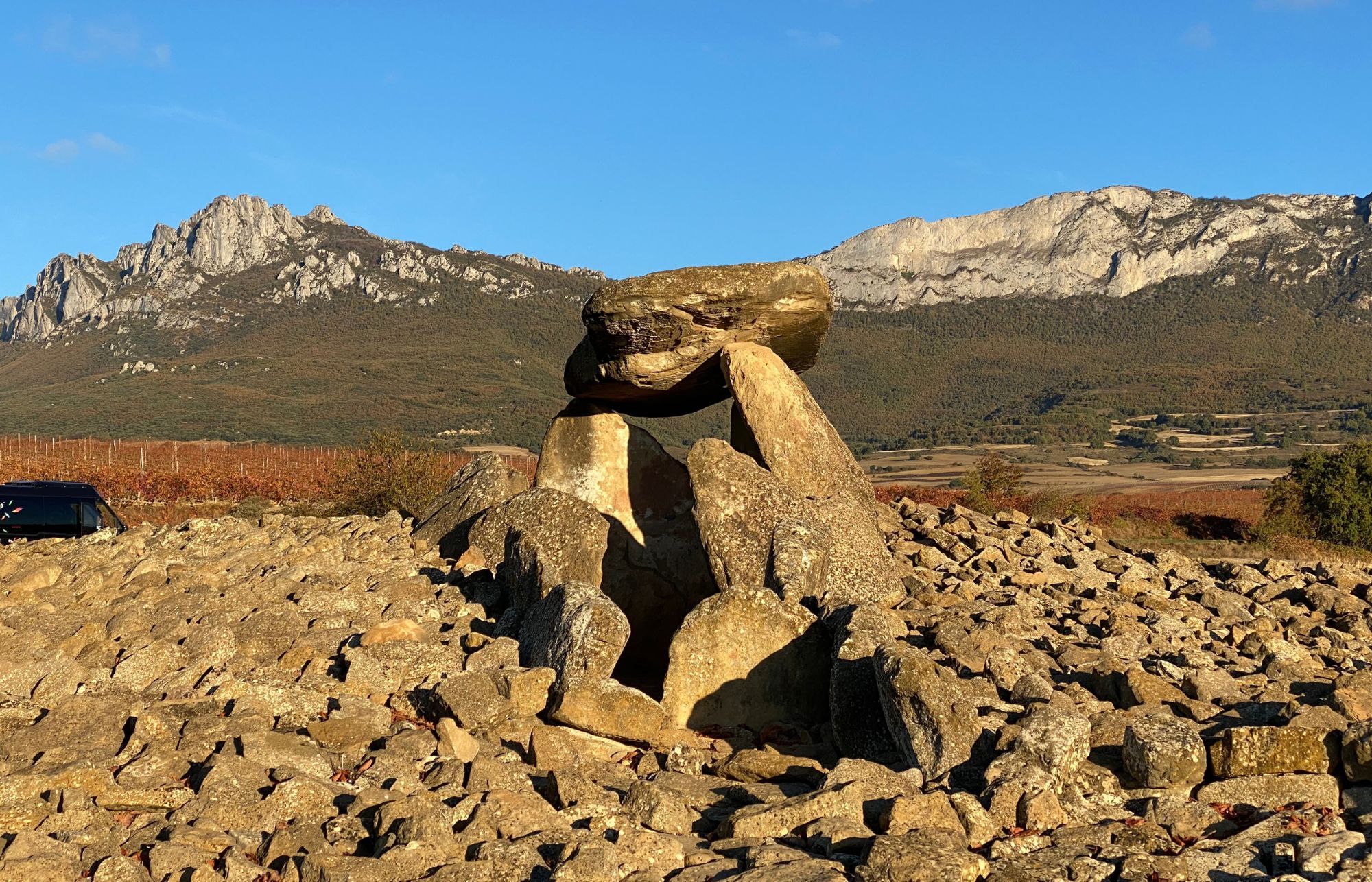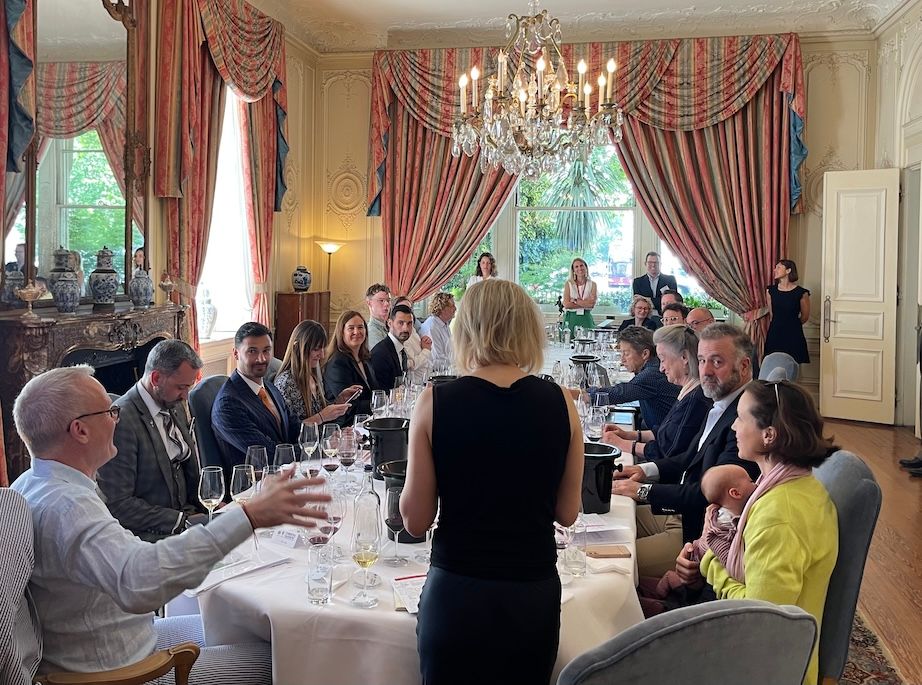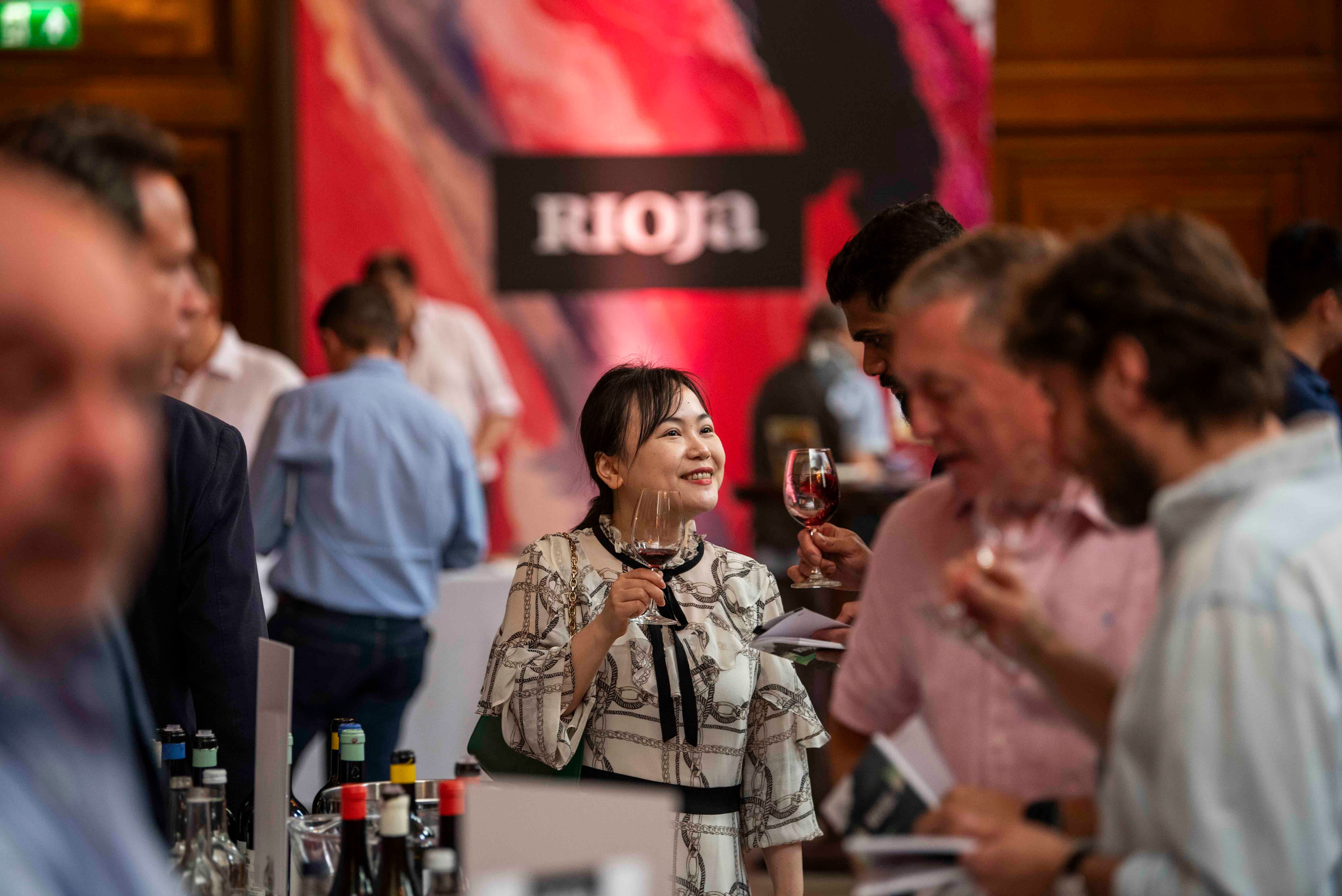Minimum intervention and less oak presence are two of the characteristics of Bryan MacRobert’s terroir-expressive Riojas under his Laventura label.
“I want to make Rioja as it once was. I’m trying to make honest wines.”
Former assistant to Eben Sadie, Bryan MacRobert makes wines in the Swartland under Bryan MacRobert Wines and Abbotsdale wines.
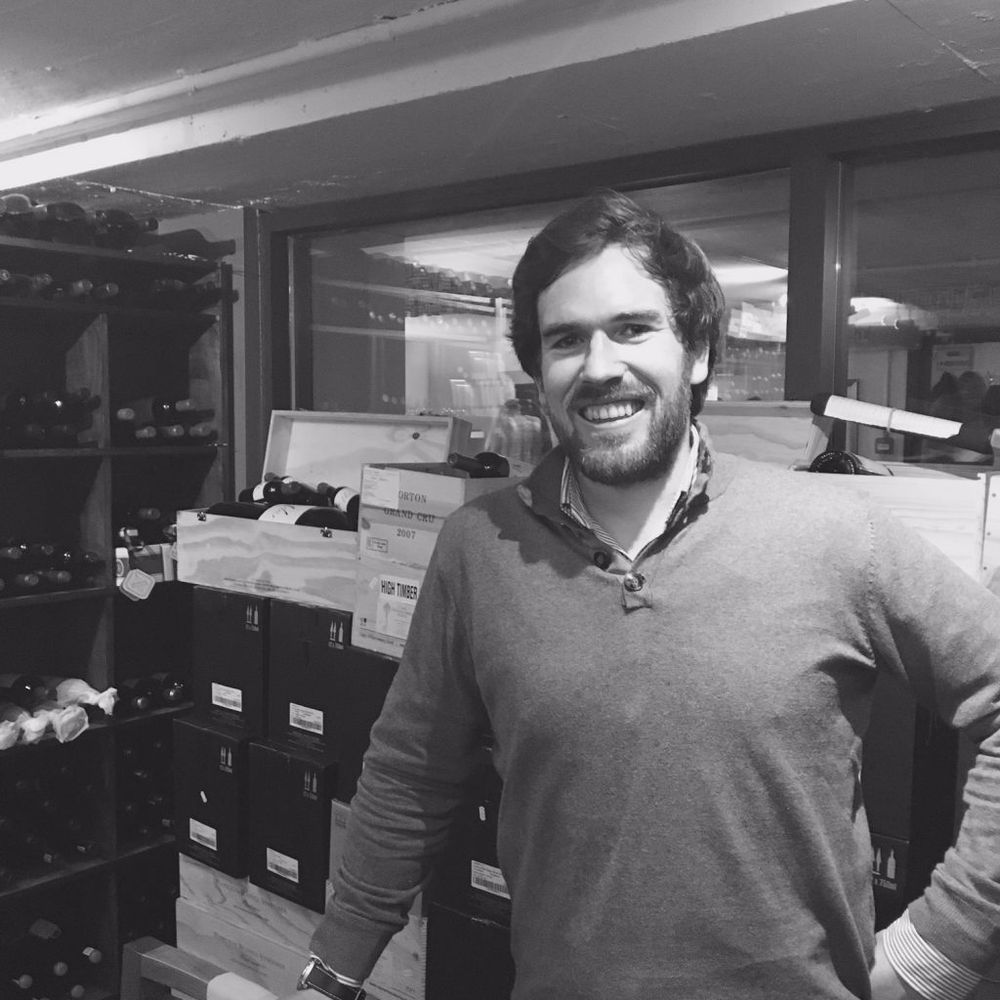
However, last week I met with him to concentrate on his wines that hail from the other side of the world: more precisely from Rioja. He is a true pioneer of terroir-expressive wines from this region.
MacRobert grew up in South Africa near the Swartland, and studied at Stellenbosch University, from which he graduated with a degree in viticulture and oenology. He spent 2008 -2012 travelling. While studying in 2010, he met his now wife, who is from Rioja.
He then moved to Rioja to study Spanish and, when presented with the wines of the region thought, “there has to be more to the region than this. The source is a blessing for wine.”
MacRobert then proceeded to work under Olivier Rivière, which resulted in him gaining invaluable experience with regards to terroir-expressive Rioja: revolving around minimal intervention, and less oak presence.
This is still something that I find difficult to come across in the UK market.
Indeed, while reading about New Wave Rioja on the Internet, Google spouts out at me articles such as, “Does terroir matter in Spain?” For Bryan, and for myself, it most certainly does.
In 2013 and 2014, the company began: it was named Laventura, combining the Spanish words for adventure and venture, uniting “uncertainty and risk with a certain amount of luck and fortune.”
They searched far and wide for old vineyards which are tough to find in the area, due to many being ripped up to be replanted.
In 2013 and 2014, they bought grapes, and in 2014, bought vineyards that are on average 70-90 years old, with both white and red varietals. All farming is organic.
With regards to winemaking, MacRobert is using barrels that have less-dominant oak, of larger formats – 500 litre and 600 litre, as well as 2000 litre Barolo-style barrels for both whites and reds, as well as some stainless steel. And, for the skin contact wine, a Nomblot egg.
So how do the wines shape up?

Viura 2014
A blend of Viura from small parcels of organically grown old vines. Barrel fermented and aged for a year in barrel. The pH here is low, around 3.1, and the acid is not high (around 6g/l). The wine didn’t complete malo – as MacRobert states, “it must be elegant going into bottle, else it will get too fat.”
Notes: Soft floral, lemon, lemon peel, grapefruit and chalky nose. On the palate, there’s some apple and fresh almond with lovely zingy tension and a brilliant length with a certain saline quality.
Malvasia 2014
From a cool part of Rioja close to the Sierra Cantabria Mountains, this comes from a single 60 year-old low-yielding vineyard of Malvasia. This varietal ripens late, and isn’t easily botrytis-affected. When ripened, it is orange in colour and transparent – so that you can see the seed in the berry.
Fermented on the skins as an orange wine, for three week in cement egg. 3.2g/l acidity. Pressed, aged and bottled with a tiny addition of sulphur before bottling.
As far as we know, it’s the only skin contact wine to come from the region.
Notes: Weighty, intense nose of orange peel, pear, quince, and red apple. On the palate, it is dry and subtle – it isn’t as weighty as other orange wines – giving it more delicacy and, in some ways, possibly more expression of origin. It’s an exceptional wine that dances between floral and fruity notes on the palate – to a more nutty, honeyed and yeasty finish.
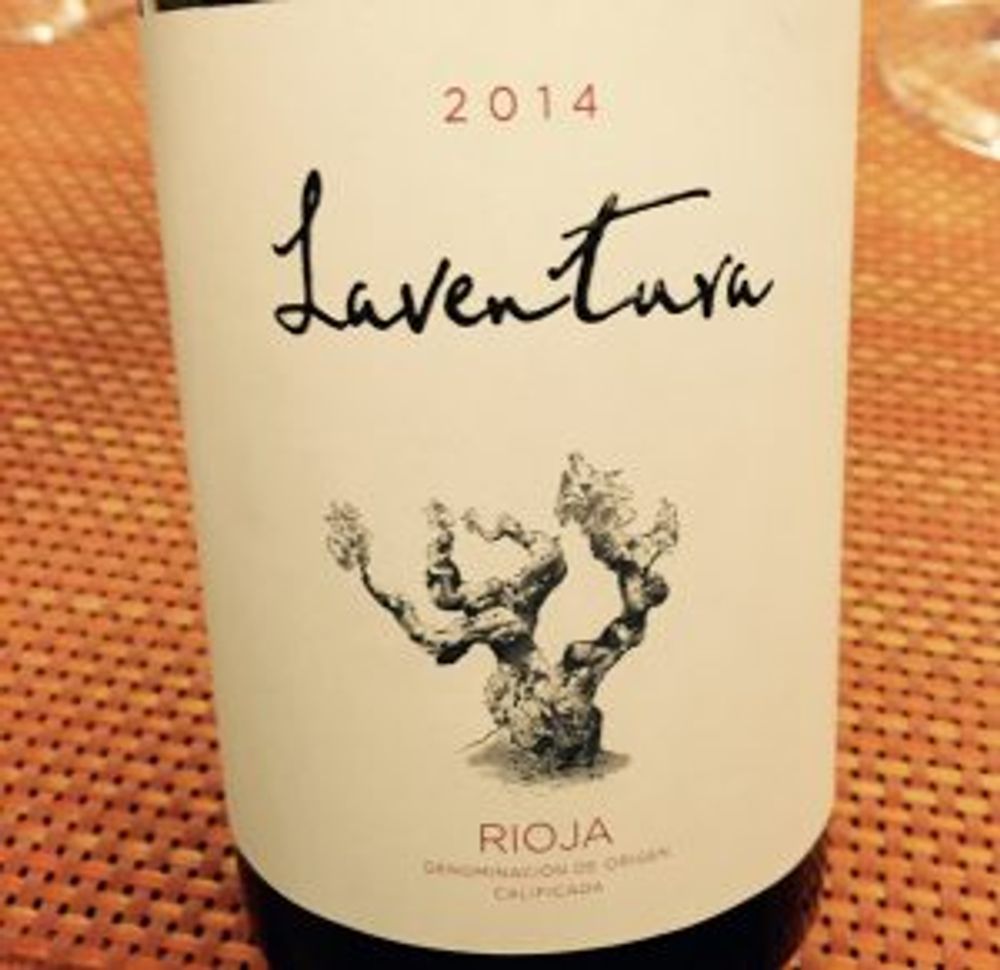
Tinto 2014
A blend of small parcels from old Tempranillo vineyards, this is fermented in open fermenters and aged in barrels for one year, 20% whole bunch, which are foot-trodden – if not, there could be problems with bad yeast.
It is 80% Tempranillo from Alavesa, 10% Garnacha from Rioja Alta, and 10% Garnacha from Rioja Baja.
MacRobert elaborated that this one isn’t easy: he doesn’t want to over-rack as it gets too extracted, but cement causes it to become too reductive. However, this reductive predisposition is why the wines age so well.
Notes: Very distinct cherry/blueberry nose that is also earthy and ever so slightly meaty. It is highly complex and really interesting – very unique, with a finish that is concentrated on some pepper and nutmeg spice.
A short note on the current proposals to recognise terroir in Rioja
When speaking about Rioja in general, more specifically about the classification system, MacRobert stated, “It’s clever, because it helps consumers to have an insight. However, it is restricting.”
Summed up in a sentence, that is exactly ‘the issue’ with Rioja at this moment in time.
There is a lot of discussion in the wine trade right now about what should happen here: an Unique Vineyard classifications been proposed which will recognise other forms of quality in the region, other than barrel and bottle age – in particular terroir and vineyard quality that is currently not officially recognised.
However, is Rioja “too late” to adapt it, as Tim Atkin MW has argued in the press, and is this proposal too loose? It seems vague to me.
Atkin summed it up excellently with, “the Consejo has begun with the roof, rather than building a new structure with solid foundations.”
Personally, I am all for the classification of wines in a village and vineyard system similar to that of Burgundy, where I began my own wine career. This system makes complete sense to me, in terms of ultimately examining terroir (differentiation in soil and microclimate) to glass.
However, I am speaking from the stance of someone in the wine trade. Would employing a village system be too complicated for consumers? Is it unrealistic? I’m still trying to decide.
I’ll leave you to mull it over. Myself, I look forward to seeing MacRobert’s wines here in the UK; a refreshing, innovative and true-to-terroir style of Rioja, and I hope more will follow.
Bryan MacRobert’s Laventura wines are imported by Red Squirrel Wine. Please contact Nik Darlington for more information.
